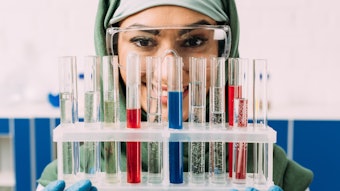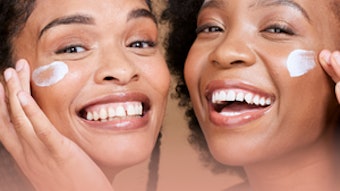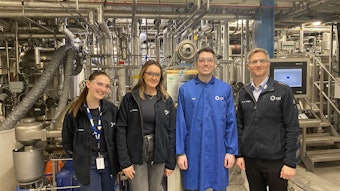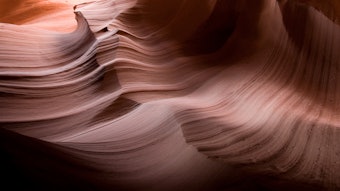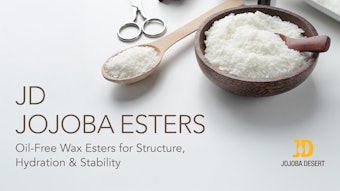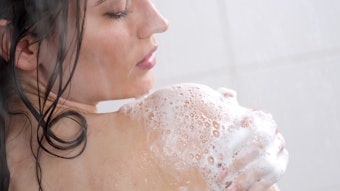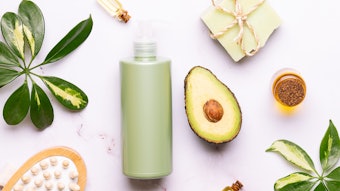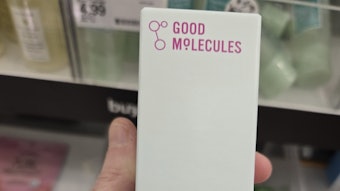
Log in to view the full article
During the IFSCC 2024 Congress, held Oct. 14-17, 2024, in Brazil, Bettina Gruber, an R&D specialist in skin care at Grupo Boticário, presented a poster exploring the moisturizing, anti-aging and skin-plumping, pore reduction and Cutibacterium acnes control benefits of a facial lotion formulated with polyglutamic acid (PGA). As she statesin this video, she believes PGA could become the new hyaluronic acid (HA) — and she is not the first to propose such. In fact, this decades-old ingredient has been making recent beauty headlines.
HA vs. PGA Structure and Function
In 2023, Glamour featured a report on PGA, referencing its being "dubbed the new hyaluronic acid" but also asking if it lives up to the hype. "Polyglutamic acid isn't necessarily better than hyaluronic acid or vice versa, as they work differently to hydrate the skin," the source explained, adding that both lock in moisture but HA is naturally found in the skin while PGA is not (it's a natural peptide typically derived via soy fermentation).
Other differences, per the source, are:
- HA acid can hold 1,000 times its weight in water, and it exists in high and low molecular weights. The lower weight penetrates the skin while the higher weight remains on the surface to form a protective film and prevent water loss.
- PGA can hold 5,000 times its molecular weight in water, suggesting it could be the better moisturizer. Due to its larger size, it acts by forming a protective film or microgel on the skin's surface.
The brand Typology describes their structures in greater detail: "[HA] is a non-branched linear chain of repeating disaccharide units of D-glucuronic acid and an aminoglycan, D-N-acetylglucosamine. Polyglutamic acid is a polymer derived from the amino acid L-glutamic. Its chemical formula is (C5H7NO3)n."
So essentially, per the source, HA is formed from a polysaccharide chain while PGA is derived from the polymerization of amino acids.
PGA — An Emerging Multifunctional in Latin America
Gruber, in her poster, reiterates: "Polyglutamic acid ... holds more potential to improve moisturization and reduce fine lines ... and wrinkles than hyaluronic acid. ... [It] promotes a plumping effect because it absorbs water." She added that, in Latin America, PGA is an emerging beauty ingredient and, in consideration of its moisturizing effects, she was inspired to explore additional benefits such as antimicrobial functions, which have been reported in the literature.
Thus, her poster (shown below) described a small lab-scale study of a facial lotion containing PGA tested in 60 subjects and evaluated for efficacy by dermatology experts. Results indicated good moisturizing effects after 28 days of use, in addition to barrier integrity benefits as soon as 14 days after use. As expected, wrinkles and fine lines were reduced.
Furthermore, in exploring its antimicrobial function, pores were visibly reduced after 28 days of product application, while C. acnes colonization was decreased after 14 days of application. "As a next step, we propose to deepen our studies in the functions related to bacteria [to] explore more [about] these claims of polyglutamic acid."
Watch her poster presentation:
HA and PGA Markets on the Rise
While both HA and PGA may provide good skin moisturizing and anti-wrinkle benefits, the market for HA is currently outpacing PGA in terms of growth.
- Future Market Insights projects the global HA personal care products market could reach US $7.36 billion by 2033, up from $3.26 billion in 2023 (expanding at an 8.5% CAGR).
- On the other hand, according to the QYResearch Group, the global PGA skin care market reached approx. $441.19 million in 2023 (up from $93 million in 2022, per Global Info Research).
- Also according to Global Info Research, the PGA market is forecasted to reach $120.5 million by 2029 (expanding at a CAGR of 3.8% from 2022).
However, the tables may turn as the HA skin care market becomes saturated and more competitive, giving the PGA beauty market more room to grow and rise to the anti-aging and moisturization challenge.
